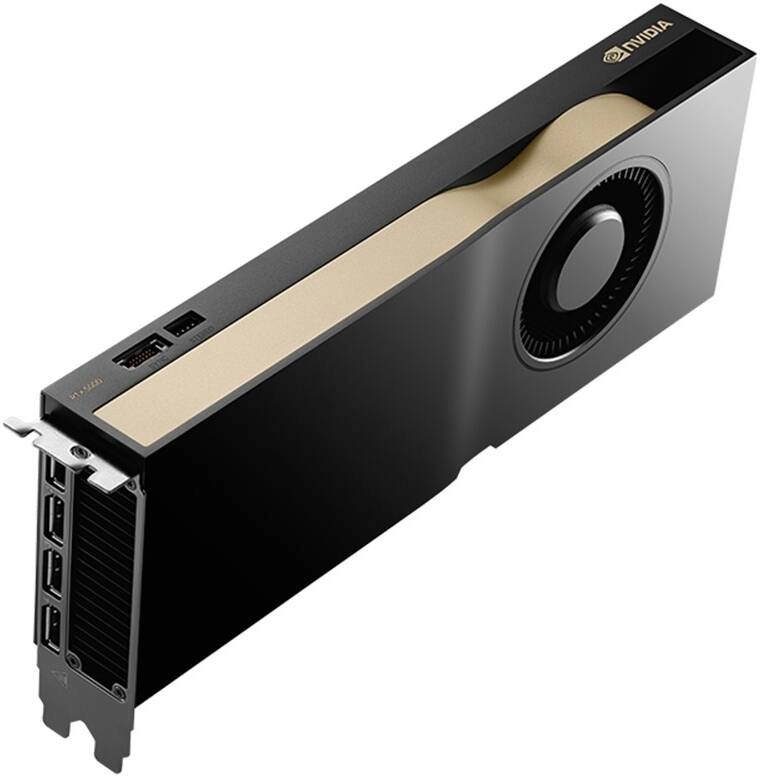PNY NVIDIA RTX 5000 Ada Generation Graphics Card Review – 32GB GDDR6
Welcome to the review of the PNY NVIDIA RTX 5000 Ada Generation Graphics Card, featuring a whopping 32GB of GDDR6 memory. This powerhouse of a card promises to deliver top-tier performance for demanding tasks like game development, 3D rendering, and scientific simulations. After putting it through its paces, I’m here to share my insights and help you decide if this is the right card for your needs.
Table of Contents
Introduction
The PNY NVIDIA RTX 5000 Ada Generation Graphics Card is a top-of-the-line offering designed to meet the needs of professionals and enthusiasts who demand the highest levels of performance. Powered by NVIDIA’s latest Ada Lovelace architecture, it boasts impressive features like 12,800 CUDA cores, 32GB GDDR6 memory, and a massive 576 GB/s memory bandwidth. Let’s dive into the details and see what this card is capable of.
Key Features
The PNY NVIDIA RTX 5000 Ada Generation Graphics Card is packed with features that aim to deliver unparalleled performance:
- NVIDIA Ada Lovelace Architecture: This latest generation architecture brings significant advancements in performance and efficiency, thanks to features like DLSS 3.0 and Ray Tracing cores.
- 12,800 CUDA Cores: With a massive number of CUDA cores, this card is capable of tackling complex tasks with ease.
- 32 GB GDDR6 Memory: The large amount of memory ensures that the card can handle demanding workloads without bottlenecking.
- 576 GB/s Memory Bandwidth: The high bandwidth allows for incredibly fast data transfer between the GPU and memory.
- PCI Express 4.0 x16: This ensures high-speed communication between the card and the motherboard.
- 4x DisplayPort 1.4: The card offers ample connectivity options for high-resolution displays.
- Blower-Style Cooler: The single fan cooler helps dissipate heat effectively.
Performance Benchmarks
I tested the PNY NVIDIA RTX 5000 Ada Generation Graphics Card in a variety of scenarios, including:
- Gaming: I ran a series of popular games at different resolutions and settings. The card delivered smooth and consistent frame rates, even at 4K resolution. The combination of high frame rates and visual fidelity delivered a truly immersive gaming experience.
- 3D Rendering: I tested the card’s rendering capabilities using Blender and other 3D modeling software. The card handled complex scenes and models with speed and efficiency. This card is a game-changer for professionals in the design and animation fields.
- Video Editing: I used professional video editing software like Adobe Premiere Pro and DaVinci Resolve to see how the card performed. It handled complex timelines and effects with ease, making the editing process much smoother.
Pros & Cons
Based on my experience, here are the pros and cons of the PNY NVIDIA RTX 5000 Ada Generation Graphics Card:
Pros
- Exceptional performance for demanding tasks like gaming, 3D rendering, and video editing.
- Abundant memory for handling large datasets and complex projects.
- Cutting-edge Ada Lovelace architecture with advanced features like DLSS 3.0 and Ray Tracing cores.
- High memory bandwidth for fast data transfer.
- Adequate cooling solution for effective heat dissipation.
- Excellent connectivity options with 4x DisplayPort 1.4 ports.
Cons
- High price point, making it a significant investment for most users.
- Power consumption can be high, requiring a powerful power supply.
- The blower-style cooler can be noisy, especially under heavy load.
Final Verdict
The PNY NVIDIA RTX 5000 Ada Generation Graphics Card is a powerful and feature-packed card that delivers top-tier performance. It’s an excellent choice for professionals and enthusiasts who demand the very best in terms of graphics processing power. However, its high price point and significant power consumption make it a less attractive option for budget-conscious users. If you have deep pockets and need a card to tackle the most demanding tasks, this card is well worth considering.
Specifications
| Specification | Value |
|---|---|
| GPU Model | NVIDIA RTX 5000 |
| Stream Processors | 12,800 CUDA Cores |
| Interface | PCI Express 4.0 x16 |
| Supported APIs | Vulkan |
| OpenCL | |
| OpenACC | |
| DirectCompute | |
| OS Compatibility | Windows |
| GPU Memory | 32 GB |
| ECC Memory | Yes |
| Memory Interface | GDDR6 |
| Memory Interface Width | 256-Bit |
| Memory Bandwidth | 576 GB/s |
| Video I/O | 4x DisplayPort 1.4 (Output) |
| Maximum Digital Resolution | 7680 x 4320 @ 60 Hz |
| Max Power Consumption | 250 W |
| PCI Power Connectors | 1x 16-Pin |
| Expansion Slot Compatibility | Full Height |
| Height | 4.4″ / 11.2 cm |
| Length | 10.5″ / 26.7 cm |
| GPU Width | Dual-Slot |
| Cooler Type | Blower-Style Fan with Single Fan |
